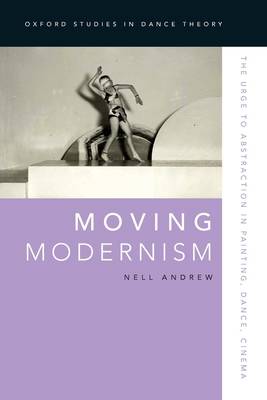
- Afhalen na 1 uur in een winkel met voorraad
- Gratis thuislevering in België vanaf € 30
- Ruim aanbod met 7 miljoen producten
- Afhalen na 1 uur in een winkel met voorraad
- Gratis thuislevering in België vanaf € 30
- Ruim aanbod met 7 miljoen producten
Zoeken
€ 93,45
+ 186 punten
Omschrijving
In early twentieth-century Europe, the watershed developments of pictorial abstraction, modern dance, and cinema coincided to shift the artistic landscape and the future of modern art. In Moving Modernism, Nell Andrew challenges assumptions about modernist abstraction and its appearance in the field of painting. By recovering performances, methods, and circles of aesthetic influence for avant-garde dance pioneers and filmmakers from the turn of the century to the interwar period including dancer Lo�e Fuller, who presented to symbolist artists the possibility of prolonged or suspended vision; Valentine de Saint-Point, whose radical dance paralleled the abstractions of cubo-futurist painting; Sophie Taeuber and her Dada dance; the Belgian "pure plastics" choreographer known as Akarova; and the dance-like cinema of Germaine Dulac Andrew demonstrates that abstraction was deployed not only as modernist form but as an apparatus of creation, perception, and reception across artistic media.
Specificaties
Betrokkenen
- Auteur(s):
- Uitgeverij:
Inhoud
- Aantal bladzijden:
- 256
- Taal:
- Engels
- Reeks:
Eigenschappen
- Productcode (EAN):
- 9780190057282
- Verschijningsdatum:
- 16/03/2020
- Uitvoering:
- Paperback
- Formaat:
- Trade paperback (VS)
- Afmetingen:
- 155 mm x 231 mm
- Gewicht:
- 408 g

Alleen bij Standaard Boekhandel
+ 186 punten op je klantenkaart van Standaard Boekhandel
Beoordelingen
We publiceren alleen reviews die voldoen aan de voorwaarden voor reviews. Bekijk onze voorwaarden voor reviews.








